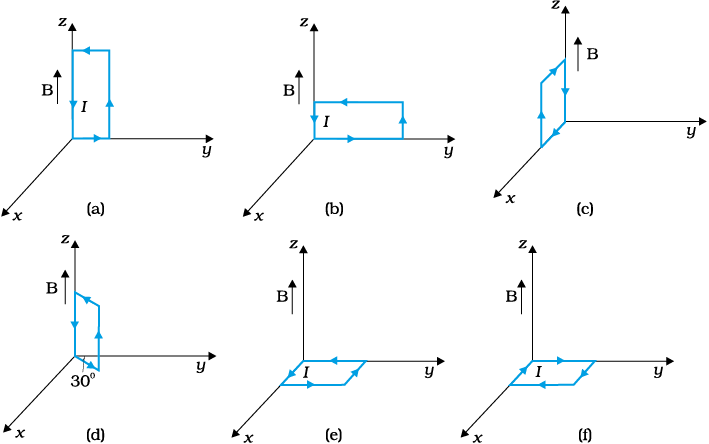Magnetic field strength, B = 3000 G = 3000 10-4 T = 0.3 T
Length of the rectangular loop, l = 10 cm
Width of the rectangular loop, b = 5 cm
Area of the loop, A = l b = 10 5 = 50 cm2 = 50 10-4 m2
Current in the loop, I = 12 A
Now, taking the anti-clockwise direction of the current as positive and vice-versa:
(a) Torque,
From the given figure, it can be observed that A is normal to the y-z plane and B is directed along the z-axis.
The torque is 1.8 10-2 N m along the negative y-direction. The force on the loop is zero because the angle between A and B is zero.
(b) This case is similar to case (a). Hence, the answer is the same as (a).
(c) Torque
From the given figure, it can be observed that A is normal to the x-z plane and B is directed along the z-axis.
The torque is 1.8 10-2 N m along the negative x direction and the force is zero.
(d) Magnitude of torque is given as:
The torque is 1.8 10-2 N m at an angle of 240 with positive x direction. The force is zero.
(e)
Hence, the torque is zero. The force is also zero.
(f)
Hence, the torque is zero. The force is also zero.
In case (e), the direction of and is the same and the angle between them is zero. If displaced, the come back to an equilibrium. Hence, its equilibrium is stable.
Whereas, in case (f), the direction of and is opposite. The angle between them is 180. If disturbed, it does not come back to its original position. Hence, its equilibrium is unstable.

